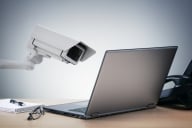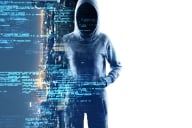You have /5 articles left.
Sign up for a free account or log in.
Campus computer labs have always been overwhelmingly PC -- that is, full of Intel-Inside, IBM-compatible personal computers. Ever since iPods gained popularity, though, Macs have likewise become increasingly ubiquitous on college campuses -- if not in the lab, then at least on students' laps.
That growing disconnect hasn't been lost on college information technology officials, many of whom have operated separate Mac labs for students working on art, video editing and other graphics-intensive tasks. But the rival Windows and Mac OS X operating systems came within reach of each other when Apple launched its first laptop featuring an Intel chip in 2006. With an Apple program called Boot Camp -- then in beta, and now a part of the latest version of OS X, Leopard -- users can now run both Windows and Mac operating systems on the same machine, choosing their preferred environment at startup.
The tantalizing possibility of running both Mac and PC software on a single Apple computer has inspired some IT managers to think about ways to save costs and avoid purchasing different types of computers for different software needs. Now, a handful of colleges is moving toward eventually replacing all campus PCs with Macs -- using the dual-boot option -- and others are taking note.
Macs' popularity among college students has steadily risen alongside the company's growing base of fans and the rabid devotion its products often inspire, vastly outpacing its national market share of under 6 percent. At Princeton University, 31 percent of students' computers connected to the campus network in fall 2006 were Macs, compared with 10 percent in 2003-4. Similar gains have been reported across the country. In fall 2006, 20 percent of freshmen at the University of Virginia owned Macs, compared with 3 percent four years earlier. At Dartmouth College, which has historically had strong Apple support, the numbers are even higher, with 55 percent of freshmen last semester reportedly using Macs.
So far, at least, that growing popularity has yet to be matched in most campus computing environments, which run on industry-standard hardware and software that rely on powerful Windows-based servers and compatible network architecture.
In 2006, two colleges separately took the unusual step of switching to Mac lab environments with the dual-boot option: Wilkes University, in Wilkes-Barre, Pa., and Bemidji State University, in Bemidji, Minn. Both began purchasing iMacs to gradually replace their existing PCs over a several-year upgrade cycle, and some other state institutions in Minnesota are following suit. Already, other colleges across the country have begun contacting the IT directors behind the shift as they consider whether going Mac-only makes sense for them as well.
It might or it might not, depending on a number of factors, and as more colleges experiment with dual-boot setups, the advantages and disadvantages will become clearer. In June, St. Francis Xavier University, in Nova Scotia, announced that it was purchasing 350 machines and encouraging its students to buy Apple computers in a campaign to convert all its labs to Mac-only environments. But at Pennsylvania State University, where officials are considering adding some Apple dual-boot facilities, any talk of switching to a single platform is off the table, mostly because of the varied needs of the campus's many departments, colleges and constituencies.
"It’s far too large an institution to head down [the path of] homogeneity, at least at that layer of the stack, if you will," said Kevin M. Morooney, Penn State's vice provost for information technology.
At Bemidji State, with over 5,000 students, and Wilkes, with 2,400 full-time students, imposing technological homogeneity isn't necessarily a problem -- and, if initial reports are to be believed, the plans have largely been embraced. When Brian Allen, Bemidji State's director of technical support, organized a test asking students to specify whether they were using a Mac mini or a PC -- the computers themselves were hidden in boxes -- they couldn't tell the difference. In fact, Windows ran faster on the Macs.
Since then, the university has switched the 115 computers in its "SuperLabs" to 20-inch iMacs or Mac minis that can run either OS X or Windows. The Mac environment comes especially in handy for students using Adobe products for graphic design or video editing as well as other CPU-sapping applications. Wilkes, which started its transition even earlier, already has over 1,000 Apple computers in dual-boat setups.
The benefits immediately became clear when Bemidji State began the transition, according to Allen. Besides saving space otherwise duplicated by Mac and PC systems that now coexist within a single machine, there are significant cost savings -- and as a result, energy savings -- to be found. Allen has projected that the university will save about $2 million in first three years of the transition alone. Even though individual Apple computers are often more expensive than their PC counterparts, the institution will be responsible for purchasing and maintaining fewer machines.
There's also savings on the software side. Allen noted that some programs, like Adobe Creative Suite, are licensed by machine, not by operating system, meaning that two copies -- one on Mac OS, one on Windows -- can be purchased for the price of one, as long as they're running in the same box.
The number of help desk calls also decreased immediately. Michael Salem, the chief information officer at Wilkes University, called the approach "the best of both worlds."
Still, that hasn't meant a completely smooth transition. Colleges aren't exactly known for quickly embracing change, especially when it comes to how students -- and faculty members -- use technology. Salem noted an interesting side effect of the switch: Students are reluctant to restart the computers to boot into a different operating system, because they've been trained to leave lab PCs on when they're finished. Even though both Mac and PC environments are no longer separated into different labs, he said, there's still work to be done to “cross-pollinate the two different groups of users.”
At Bemidji State, Allen said he's considering moving one step further and embracing Apples in the server room, too. The university is also piloting a faculty laptop program using Macbooks. That initiative's success may depend on whether the university -- and its students and faculty -- can bridge the gap between their personal and professional technological expectations.
"There might be benefits to doing a dual-boot lab, but there are still some pretty significant unknowns about what the management of that kind of facility requires, because, as with many things now coming out of Apple, there’s a profound consumer orientation, and managing a lab is an enterprise orientation," said Morooney, of Penn State. "I’m staring at an Apple product as I’m talking to you."








